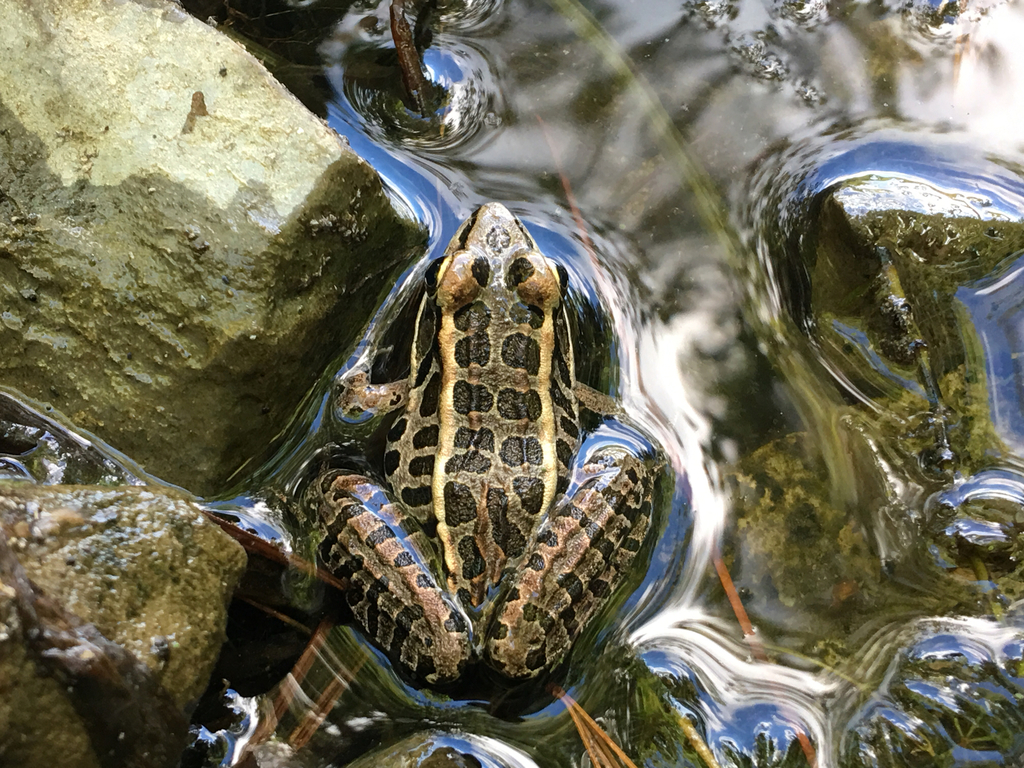Prince Edward County, Ontario, Canada
Frogs In Need of Conservation
FROGS IN NEED OF CONSERVATION!
Matt Ellerbeck – Frog Advocate & Conservationist
(photo credit may be seen by “mousing over” the photo)
 Frog are in terrible trouble. Around 33% of all the world’s frog species are threatened with extinction. This includes several forms found here in Ontario.
Frog are in terrible trouble. Around 33% of all the world’s frog species are threatened with extinction. This includes several forms found here in Ontario.
The Great Lakes/St. Lawrence population (east and north of Toronto) of the Western Chorus Frog (Pseudacris triseriata) is listed as Threatened under the federal Species at Risk Act. The Fowler’s Toad (Anaxyrus fowleri) is even more at risk, being listed as Endangered. Worse still, the diminutive Northern Cricket Frog (Acris crepitans) is considered extinct from Ontario.
More of Ontario’s frogs could also be in sharp decline too, as many species have not yet been properly assessed.
Habitat destruction is largely responsible for the loss of frogs. Areas that were once suitable for these animals to live have now been destroyed. The areas that still remain are often degraded with hazardous chemicals like oils, gasoline, and pesticides.
Habitats are often isolated and cut off from one another by the roads and highways that now run through them. Countless numbers of frogs are killed on roads and highways every year when they are hit by vehicles.
A 2006 study from Carleton University in Ottawa suggested that heavy traffic in their environment was a larger threat to frog populations than habitat loss.
Sadly, many of the frogs that are migrating to breeding and egg-laying sites must cross over roads to reach such areas. Here, many of the mature members of the breeding population are killed. Removing members of the breeding populations greatly limits reproductive output, and this makes it incredibly hard for frog numbers to rebound.
Being hit and killed by vehicles is not the only threat that roads create for frogs. Chemical run-off from vehicles contaminate roadside ditches and pools. These sites are often utilized by frogs for breeding and birthing.
Climate change is among the most serious threats that frog populations face. Detrimental changes in climate such as increased temperatures, changing humidity levels, desertification, and droughts wreak havoc on frogs. These animals are generally adapted to moist and cooler habitats and may require very specific conditions to thrive; therefore, changes to these conditions via climate change can be life threatening to frogs. Frogs also live a ”double-life” being associated with both aquatic and terrestrial habitats. Alterations to these optimal conditions result in frog species dwindling. Changes in climate can also effect the forming and availability of critical habitat features such as vernal pools (that are utilized for breeding and birthing/egg-laying sites). Certain frog species have small natural ranges, and within these ranges show fidelity to over-wintering sites. Thus, these forms have limited opportunities for dispersal if their habitats are degraded due to negative climate changes. Climate change is often cited to be one of the reasons that frogs are disappearing from otherwise pristine and protected habitats.
Disease is another issue plaguing frogs. Chytridiomycosis is an often fatal infectious skin disease that seriously affects frogs. The condition is caused by the chytrid fungus – Batrachochytrium dendrobatidis or Bd. It has been responsible for mass declines in frog populations. Devastatingly, Bd has been found on all of the continents where frogs occur. It may be responsible for the greatest disease-caused loss of biodiversity in recorded history (Skerratt et al. 2007).
Chytridiomycosis has been linked to dramatic population declines or even extinctions of frog species in western North America, Central America, South America, eastern Australia, East Africa and in parts of the Caribbean. The fungus is capable of causing sporadic deaths in some frog populations and 100% mortality in others. Sadly, no effective measure is known for control of the disease in wild populations. Ranavirus is another ailment that is impacting frogs negatively. The pathogen causes severe hemorrhages of the internal organs.
Frogs are often taken in huge numbers, directly from the wild. They are taken for use as fishing bait, for the pet trade, for use as dissections, and for food markets. This accounts for millions and millions of frogs being captured from their natural habitats annually! All of these trade ultimately kill the frogs. In 2009, individuals at the National University of Singapore called for more regulation and monitoring in the global frog meat market in order to avoid species being “eaten to extinction”. David Bickford, from the University, estimates that between 180 million to over a billion frogs are harvested each year.
The serious amphibian diseases ranaviruses and chytrid fungus (Batrachochytrium dendrobatidis – Bd) are also being spread throughout populations and to previously healthy animals via these trades. When infected animals are captured from the wild and then shipped and sold in other locations, they bring the diseases with them. The fishing bait trade is particularly harmful in this regard.
A massive number of frogs are being lost each year through the combination of the many threats mentioned above. This unnatural decline in frog populations cannot rebound on its own. This is why the conservation of frogs is required. Without assistance, many species simply cannot survive the many hazards we have created for them.
To learn how you can help visit: www.saveallfrogs.com